The 21-Day Keto Diet is a structured program designed to kickstart weight loss and improve overall health by reducing carbohydrate intake and increasing healthy fats, promoting ketosis for optimal fat burning and enhanced well-being.
Overview of the 21-Day Keto Challenge
The 21-Day Keto Challenge is a well-structured dietary program aimed at helping individuals achieve significant weight loss and improve their metabolic health. By focusing on a low-carb, high-fat diet, participants aim to enter a state of ketosis, where the body efficiently burns fat for energy. The challenge provides detailed meal plans, recipes, and guidance on balancing macronutrients to ensure success. It’s essential to consult a healthcare provider before starting any new diet plan.
Importance of a Structured Meal Plan
A structured meal plan is essential for the success of the 21-Day Keto Diet. It helps balance macronutrients, ensuring adequate fat, protein, and minimal carbs, while providing clear recipes and portion guidance. This organization prevents mistakes, keeps you on track, and ensures nutritional needs are met. A well-planned diet fosters accountability, making the transition to ketosis smoother and sustainable, while also helping to avoid common pitfalls like nutrient deficiencies or overeating.
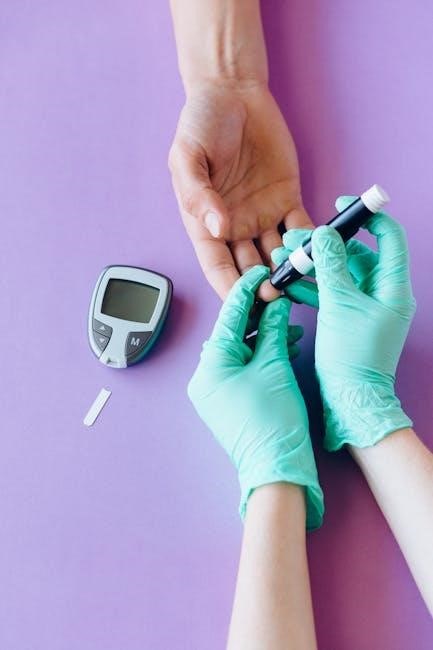
Understanding the Keto Diet
The keto diet is a low-carb, high-fat eating plan that shifts metabolism into ketosis, burning fat for energy. It’s proven to aid weight loss and improve health.
What is the Ketogenic Diet?
The ketogenic diet is a low-carb, high-fat eating plan that shifts your body into ketosis, a metabolic state where fat is burned for energy instead of carbohydrates. By drastically reducing carb intake (typically under 20g of net carbs daily), the body transitions from relying on glucose to using ketones, which are produced from stored fat. This diet is often adopted for weight loss, improved blood sugar control, and enhanced energy levels.
How Ketosis Works
Ketosis is a metabolic state where your body burns fat for energy instead of carbohydrates. When carb intake is drastically reduced (typically under 20g of net carbs daily), your liver converts stored fat into ketones, which become your primary energy source. This process optimizes fat burning, reduces glucose dependence, and supports weight loss and improved metabolic health, making it a cornerstone of the ketogenic diet’s success.
Benefits of a Low-Carb, High-Fat Diet
A low-carb, high-fat diet promotes rapid weight loss, improved blood sugar control, and enhanced mental clarity. By reducing sugar cravings and stabilizing energy levels, it supports overall metabolic health. The diet also decreases inflammation and increases fat burning efficiency, making it a sustainable choice for long-term health benefits and improved well-being.
Preparing for the 21-Day Keto Diet
Begin by setting realistic goals, stocking your pantry with keto-friendly foods, and understanding macronutrients to ensure a smooth transition into the 21-day plan.
Setting Realistic Weight Loss Goals
Setting realistic weight loss goals is crucial for success on the 21-Day Keto Diet. Aim for a sustainable weight loss of 1-2 pounds per week, focusing on fat loss rather than just scale weight. Consider your starting point, activity level, and overall health to create achievable targets. A well-structured meal plan and consistent effort will help you stay motivated and committed to your goals throughout the 21 days.
Stocking Your Pantry with Keto-Friendly Foods
Stock your pantry with keto-friendly foods like avocados, nuts, seeds, olive oil, coconut oil, and full-fat dairy. Include low-carb vegetables, meats, poultry, fish, and eggs. Add keto-approved snacks such as dark chocolate, cheese, and keto granola. Don’t forget condiments like butter, ghee, and sugar-free sauces. Always check labels to avoid hidden carbs and sugars, ensuring your pantry supports your 21-Day Keto Diet goals effectively.
Understanding Macronutrients and Their Importance
Macronutrients—fats, proteins, and carbohydrates—are crucial for the 21-Day Keto Diet. Fats provide energy, proteins support muscle growth, and carbs are minimized to induce ketosis. Aim for high fat (70-80% of calories), moderate protein (15-20%), and low carbs (5-10%). This balance ensures your body burns fat efficiently, promoting weight loss and metabolic health while maintaining satiety and energy levels throughout the day.
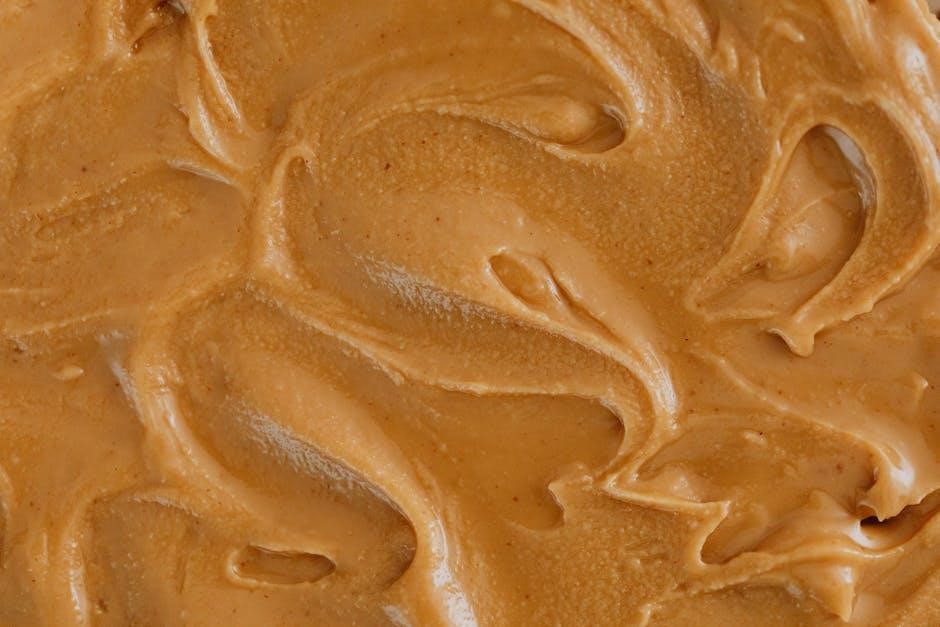
Sample 21-Day Keto Meal Plan
A structured 21-Day Keto Meal Plan offers daily recipes and macronutrient balances, ensuring low-carb, high-fat intake. Meals like Chorizo Breakfast Bake and Sesame Pork Avocado Lime Salmon simplify ketosis adherence.
Week 1 focuses on transitioning into ketosis with simple, delicious meals. Breakfast options include dishes like Chorizo Breakfast Bake and Greek Yogurt Crunch Bowls. Lunches feature keto-friendly favorites such as lettuce wraps and Sesame Pork. Dinners like Avocado Lime Salmon ensure balanced macronutrients. This week emphasizes fat adaptation, reducing cravings, and building a foundation for the next 14 days with clear meal guidance and flavorful recipes.
Week 2: Balancing Macronutrients
Week 2 focuses on refining your macronutrient balance to optimize ketosis. Meals emphasize higher fat intake, moderate protein, and minimal carbs. Breakfasts like Primal Omelets and keto smoothies are paired with lunches such as Cobb salads and dinners featuring Baked Salmon or Pork Chops. This phase helps stabilize energy levels, reduces cravings, and ensures sustained fat burning, with a focus on variety and nutrient-dense ingredients to keep meals enjoyable and satisfying.
Week 3: Advanced Keto Recipes
Week 3 introduces advanced keto recipes to keep meals exciting and flavorful. Dishes like Zucchini Boats, Keto Lasagna, and Fathead Pizza are featured. These recipes incorporate creative use of keto-friendly ingredients, ensuring meals remain high in fat and low in carbs. This phase helps maintain ketosis while offering variety, keeping the diet engaging and preventing boredom, with a focus on satisfying and delicious meals that promote long-term adherence.
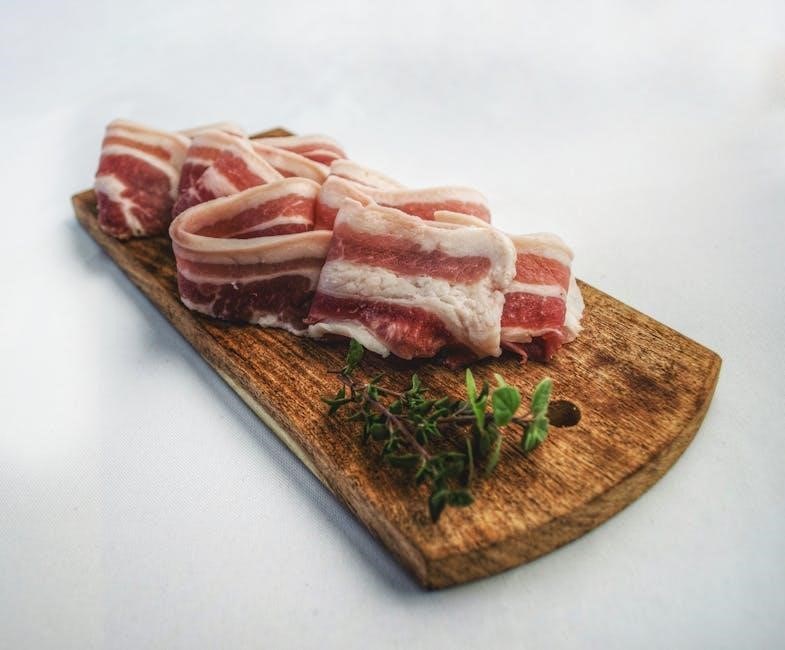
Keto Diet Foods
The keto diet focuses on high-fat foods like avocados, nuts, and healthy oils, moderate protein sources, and low-carb vegetables. Avoid sugary, high-carb, and processed foods to maintain ketosis effectively.
Best Foods to Eat on the Keto Diet
The keto diet emphasizes high-fat foods like avocados, nuts, and healthy oils, moderate protein sources such as eggs, meats, and fish, and low-carb vegetables like spinach and broccoli. Full-fat dairy products, including cheese and Greek yogurt, are also encouraged. These foods support ketosis, helping your body burn fat efficiently while maintaining energy and satisfaction throughout the day.
Foods to Avoid on the Keto Diet
On the keto diet, it’s crucial to avoid high-carb foods like sugary snacks, grains, starchy vegetables, and legumes. Limit intake of alcohol, processed foods, and high-sugar fruits. These can disrupt ketosis and hinder weight loss. Focus on eliminating foods with added sugars, refined carbohydrates, and excessive starch to maintain a low-carb, high-fat intake and support your body’s transition into ketosis effectively.
Healthy Snacking Options
For keto-friendly snacks, opt for low-carb, high-fat choices like nuts (macadamia, almonds), seeds, cheese, hard-boiled eggs, avocado, and keto-friendly veggies with dips. These snacks keep you satisfied, maintain ketosis, and support your weight loss goals without compromising on flavor or nutrition, ensuring you stay on track throughout the day.
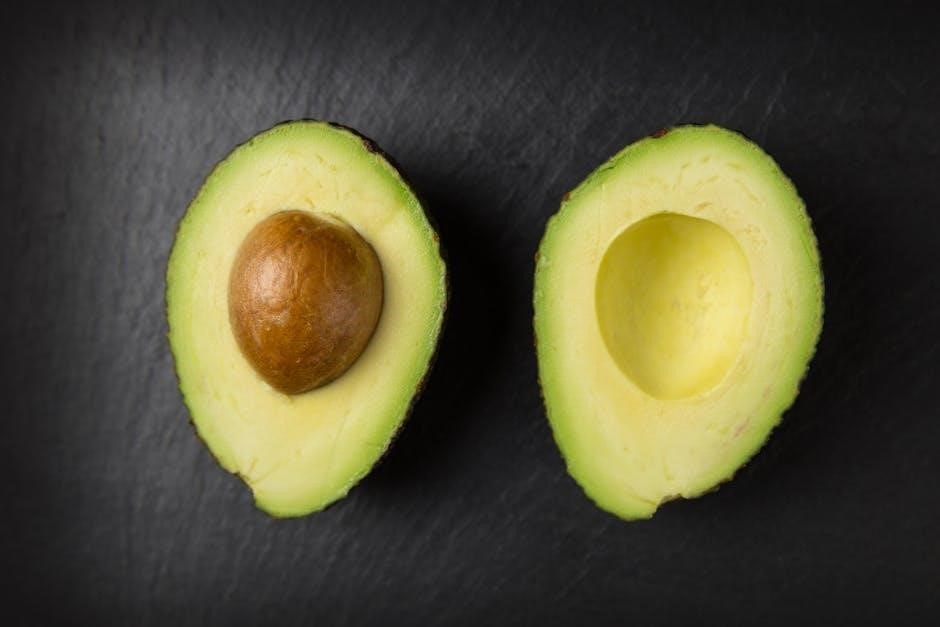
Understanding Ketosis
Ketosis is a metabolic state where your body burns fat for energy instead of carbohydrates, producing ketones. It’s the cornerstone of the keto diet, promoting weight loss and improved energy levels by shifting your metabolism to rely on stored fat as fuel.
How to Enter Ketosis Quickly
Entering ketosis rapidly requires strict adherence to a low-carb, high-fat diet. Reduce daily net carbs to 20-30g, focus on whole foods like meats, fish, eggs, and healthy oils, and stay hydrated. Incorporate intermittent fasting and moderate exercise to accelerate fat burning. Monitoring ketone levels through testing strips or blood meters helps confirm ketosis, ensuring your body transitions smoothly to using fat as its primary energy source.
Signs You’re in Ketosis
Common indicators of ketosis include increased energy levels, reduced hunger, and weight loss. Physical signs may involve a metallic taste, bad breath, or nausea. Urine testing strips can show ketone presence, while blood meters provide precise measurements. Mental clarity and decreased carb cravings are also signs your body has transitioned to burning fat efficiently.
Common Mistakes That Break Ketosis
Overconsumption of carbohydrates is a primary mistake that disrupts ketosis. Eating high-sugar foods, hidden carbs in sauces, or excessive protein can also halt fat burning. Additionally, inadequate fat intake and inconsistent meal timing can slow progress. Staying hydrated and tracking macronutrients are crucial to maintaining ketosis and achieving desired weight loss results throughout the 21-day plan.

Tracking Your Progress
Monitoring your progress is essential for success. Use a food diary to track meals, measure ketone levels, and record weekly weight and body measurements to stay motivated and ensure the diet’s effectiveness.
Using a Food Diary for Accountability
A food diary is a powerful tool for tracking your daily meals, ensuring adherence to the keto diet. By documenting each meal, you can monitor your macronutrient intake, carb count, and fat consumption. Writing down what you eat before consuming helps build accountability and reduces impulsive choices. Regularly reviewing your diary can also identify patterns and areas for improvement, keeping you focused on your weight loss and health goals throughout the 21-day plan.
Monitoring Ketone Levels
Monitoring ketone levels is crucial to ensure you’re in ketosis throughout the 21-day keto diet. Use urine strips, breath analyzers, or blood ketone meters to measure your ketone levels. Aim for optimal ketosis (0.5-3.0 mmol/L) to maximize fat burning and weight loss. Regular testing helps you stay on track and adjust your diet as needed, ensuring your body efficiently uses fat for energy and maintains metabolic balance. Consistency is key to achieving desired results.
Weekly Weight and Measurement Tracking
Tracking your weight and measurements weekly helps monitor progress and stay motivated during the 21-day keto diet; Record your weight, waist circumference, and body fat percentage. Take progress photos to visualize changes. Measurements should be taken once a week, on the same day and time, ideally in the morning. This consistency helps in identifying patterns, making necessary adjustments, and celebrating milestones along your keto journey. Regular tracking ensures accountability and keeps you aligned with your goals.
Common Challenges on the Keto Diet
The keto diet often presents challenges like the “keto flu,” cravings, and social pressures. Staying motivated and adapting to the strict dietary rules can be difficult for many individuals.
Dealing with the Keto Flu
The “keto flu” is a common experience during the initial transition to a ketogenic diet. Symptoms include fatigue, headaches, and nausea, primarily due to dehydration and electrolyte imbalances. To alleviate these issues, increase hydration, supplement with electrolytes like sodium and potassium, and consider incorporating exogenous ketones to help your body adapt more smoothly to ketosis. Proper planning and gradual carb reduction can also minimize discomfort during this adjustment period;
Managing Cravings
Cravings are a common challenge during the ketogenic diet, often triggered by carb withdrawal or emotional eating. To manage them, stay hydrated, and opt for healthy snacks like nuts, cheese, or low-carb veggies. Meal prepping and having keto-friendly alternatives on hand can also help reduce temptation. Identifying emotional triggers and incorporating physical activity can further support long-term adherence to the diet, ensuring sustained success in managing cravings effectively and maintaining ketosis.
Staying Motivated During the 21 Days
Staying motivated on the 21-Day Keto Diet requires setting clear goals and celebrating small victories. Track your progress with a food diary or mobile app to visualize improvements. Share your journey with a friend or join a keto community for support. Focus on how your body and mind transform, and remind yourself of the benefits, like increased energy and weight loss. Stay committed, and the results will keep you inspired throughout the challenge.
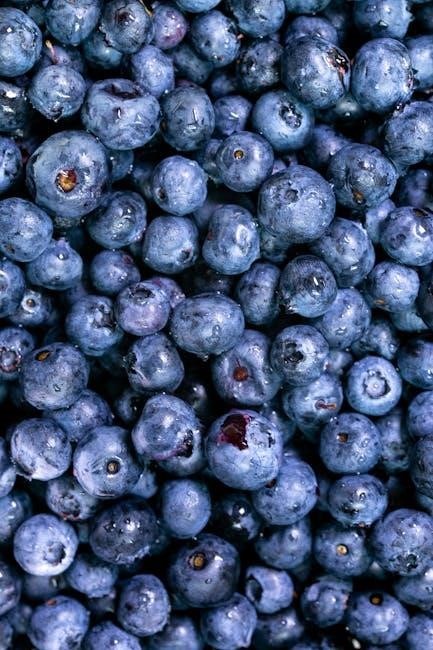
Keto Supplements
Keto supplements like exogenous ketones and electrolytes support ketosis, helping maintain energy levels and reduce flu-like symptoms. They enhance fat burning and overall diet adherence effectively.
Exogenous Ketones
Exogenous ketones are supplements that provide an external source of ketones, helping the body achieve ketosis faster. They can reduce keto flu symptoms like fatigue and brain fog, making the transition to a ketogenic diet smoother. These supplements are particularly beneficial during the initial phases of the diet, as they help raise ketone levels quickly, promoting fat burning and energy production. They are ideal for those struggling to enter ketosis naturally and can be used to support workout performance and mental clarity during the 21-day keto plan.
Electrolytes and Their Importance
Electrolytes, such as sodium, potassium, and magnesium, play a crucial role in maintaining proper hydration and nerve function on the keto diet. Due to the diet’s diuretic effect, electrolyte levels often drop, leading to symptoms like fatigue and muscle cramps. Replenishing these minerals through food or supplements is essential to avoid keto flu and support overall health during the 21-day plan. Prioritizing electrolyte balance ensures a smoother transition into ketosis and sustained energy levels.
Other Helpful Supplements
Beyond exogenous ketones and electrolytes, other supplements like MCT oil, omega-3 fatty acids, and fiber can support the keto diet. MCT oil enhances fat metabolism, while omega-3s promote heart health. Fiber supplements aid digestion and satiety, addressing common low-carb challenges. Additionally, vitamin D and magnesium are often recommended to fill nutritional gaps. These supplements can complement the diet, ensuring optimal health and well-being during the 21-day plan.

Health Benefits Beyond Weight Loss
The 21-day keto diet promotes improved blood sugar control, enhanced mental clarity, and reduced inflammation, offering holistic health benefits that extend far beyond weight reduction.
Improved Blood Sugar Control
The 21-day keto diet helps stabilize blood sugar levels by minimizing carbohydrate intake, which reduces insulin spikes and promotes insulin sensitivity. This metabolic shift can be particularly beneficial for individuals with type 2 diabetes or prediabetes. By focusing on low-carb, high-fat meals, the body learns to rely on fat for energy, leading to better glucose regulation and potentially reducing the need for medication. This makes the keto diet a valuable tool for managing blood sugar health.
Enhanced Mental Clarity
The 21-day keto diet often leads to improved cognitive function and mental clarity. By switching to a ketosis-driven metabolism, the brain utilizes ketones as a stable energy source, reducing brain fog and enhancing focus. Many participants report sharper mental acuity, better concentration, and a sense of mental clarity, making the keto diet a popular choice for individuals seeking both physical and mental improvements.
Reduced Inflammation
The 21-day keto diet helps reduce inflammation by minimizing carbohydrate intake and promoting the consumption of anti-inflammatory foods. Healthy fats, such as avocados and omega-3 fatty acids, play a key role in lowering inflammation. This dietary approach can also improve chronic inflammatory conditions, contributing to overall better health and well-being during and beyond the 21-day period.
Is the Keto Diet Safe?
The keto diet is generally safe for most people, promoting weight loss and metabolic benefits, but it may not suit everyone, especially those with certain health conditions, requiring medical consultation before starting.
Short-Term vs. Long-Term Safety
The keto diet is typically safe in the short term, with many experiencing weight loss and improved blood sugar control within 21 days. However, long-term safety remains debated, as prolonged restriction of certain food groups may lead to nutrient deficiencies. Consulting a healthcare professional is crucial to ensure the diet aligns with individual health needs and goals.
Potential Side Effects
The keto diet may cause short-term side effects, often referred to as the “keto flu,” including headaches, fatigue, and nausea. These symptoms typically subside within a few days. Additionally, some individuals may experience bad breath, known as “keto breath,” due to acetone production. Proper hydration and electrolyte balance can help mitigate these effects. Long-term side effects are rare but may include nutrient deficiencies if the diet isn’t well-planned.
Who Should Avoid the Keto Diet
Certain individuals should avoid the keto diet, including pregnant or breastfeeding women, those with type 1 diabetes, and people with liver or kidney disease. Additionally, anyone with a history of heart disease or gallbladder issues should consult their doctor before starting the diet. It’s also not recommended for individuals with eating disorders or those taking certain medications that could interact negatively with ketosis.
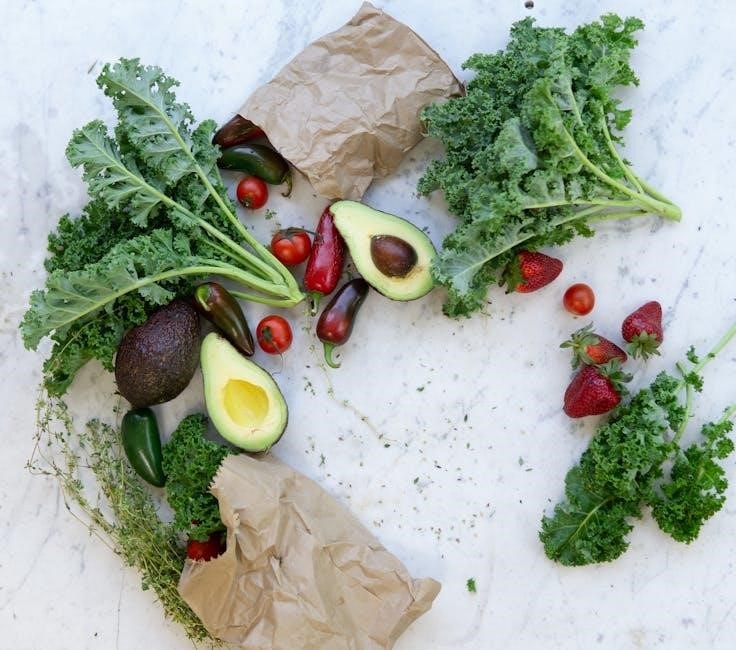
Success Stories and Testimonials
Inspiring testimonials reveal life-changing transformations on the 21-Day Keto Diet, with individuals achieving significant weight loss, improved energy, and enhanced overall health through sustainable ketosis.
Real-Life Weight Loss Transformations
Many individuals have shared their inspiring journeys with the 21-Day Keto Diet, achieving remarkable weight loss and improved health. Participants reported shedding up to 15 pounds in three weeks, with some losing inches around the waist and hips. The structured meal plans and focus on ketosis helped them stay motivated and satisfied, leading to sustainable results and a newfound confidence in their healthier lifestyles.
Experiences from Keto Diet Veterans
Keto diet veterans highlight the transformative impact of the 21-Day Keto Diet, sharing stories of significant fat loss, improved energy, and enhanced mental clarity. Many veterans emphasize the importance of staying committed to the plan and tracking progress. They also stress the value of community support and the satisfaction of achieving sustainable results, proving the diet’s effectiveness for both beginners and experienced keto followers.

Final Thoughts on the 21-Day Keto Diet
The 21-Day Keto Diet is a powerful tool for weight loss and improved health, offering a structured path to ketosis and sustainable lifestyle changes for long-term success.
Is the 21-Day Keto Diet Sustainable?
The 21-Day Keto Diet can be sustainable for many, as it focuses on whole, nutrient-dense foods and teaches healthy eating habits; By eliminating cravings and stabilizing blood sugar, individuals often find it easier to maintain this lifestyle beyond the initial period. However, long-term success depends on personal commitment and gradual integration of keto principles into daily life. Proper planning and support are key to sustaining benefits over time.
Next Steps After Completing the Plan
After finishing the 21-Day Keto Diet, consider transitioning to a long-term ketogenic lifestyle or gradually reintroducing select carbs. Continuing with keto-friendly meals and tracking macros helps maintain weight loss. For flexibility, some adopt a cyclical keto approach or incorporate intermittent fasting. Staying educated and connected through keto communities ensures ongoing support and motivation to achieve lasting health and wellness goals effectively.

